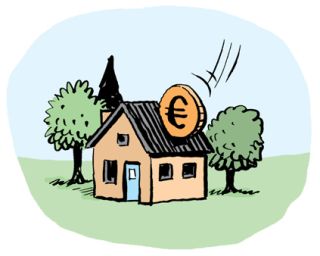Poverty increases by 150% after rent is included for households receiving subsidies

The poverty risk of households in receipt of housing subsidies is two and a half times greater after they have paid their rent, according to Social Justice Ireland’s latest study, titled ‘Housing and Poverty 2022’, which is published today. Far from supporting families out of poverty, housing subsidies are so inadequate as to be driving greater numbers into it.
Social Justice Ireland have argued for years that housing subsidies such as the Housing Assistance Payment and Rental Accommodation Scheme did not work. This latest study provides further proof of that. The poverty rate among households in receipt of housing subsidies is 22.7 per cent before they make any rent payments. After these payments have been made, that rate increases to 55.9 per cent. Clearly subsidies are not working, when the rents households must pay are driving them into poverty at this rate. It is essential that Government increase spending on actually building social homes instead of relying on a dysfunctional private rented sector.
Housing and Poverty 2022 analyses the impact of housing costs – mortgage interest and rent – on the poverty rates of various household types. Social Justice Ireland has consistently argued for the prioritisation of social housing delivery, not social housing solutions. This would not only provide sustainable homes to the families that need them, but would free up almost 60,000 private rented homes to the market, a measure that would undoubtedly have a positive impact on market rents.

GIVING A VOICE TO THOSE
WHO DON’T HAVE A VOICE
When you support Social Justice Ireland, you are tackling the causes of problems.
Housing and Poverty 2022 - Main Findings:
- The overall poverty rate increases from 13.3 per cent before housing costs to 19 per cent after housing costs – an increase of almost 300,000 people.
- Renters are the worst affected, with 44.7 per cent at risk of poverty after housing payments.
- For households in receipt of rent subsidies, the poverty rate increases from 22.7 per cent pre-rent payment to 55.9 per cent after rent.
- For households in Local Authority accommodation, the poverty rate increases from 37.6 per cent to 49.8 per cent after rent payments.
- Lone parents are the worst affected of all household type, with an increase in the poverty rate to 50 per cent after housing payments.
- People living with a long-standing health problem are also severely affected, with a poverty rate increasing from 33.7 per cent before housing costs to 47.4 per cent after.
The decline in Local Authority construction, discretionary nature of HAP tenancies, increase in the cost of private rents and the promotion by Government of policies which seek to rely on the private rented sector for the provision of social housing, places low-income households in precarious living situations. It is also pushing them further into poverty.
It should be a national priority to provide all with sufficient income to live life with dignity. This would require enough income to provide a minimum floor of social and economic resources in such a way as to ensure that no person in Ireland falls below the threshold of social provision necessary to enable him or her to participate in activities that are considered the norm for society generally, including the provision of a decent home.
Housing and Poverty 2022 is a special edition policy briefing issued by Social Justice Ireland. It aims to provide an update on the impact of housing costs (mortgage interest and rent) on the poverty rate across a range of key demographics.

GIVING A VOICE TO THOSE
WHO DON’T HAVE A VOICE
When you support Social Justice Ireland, you are tackling the causes of problems.
